Abstract
Much peroxidase is released from eosinophils that ingest complexes formed of human immunoglobulins with specific rabbit antibody. The complex formed of IgE with rabbit antibody, was particularly effective. The amount and rate of release of peroxidase was closely related to the amounts of complex ingested by the eosinophils, and degree of lysis of the cell granules. It is proposed that eosinophils attracted to an allergic lesion ingest complexes of IgE, show lysis of granules with release of peroxidase, and that the peroxidase reduces the allergic reaction.
Full text
PDF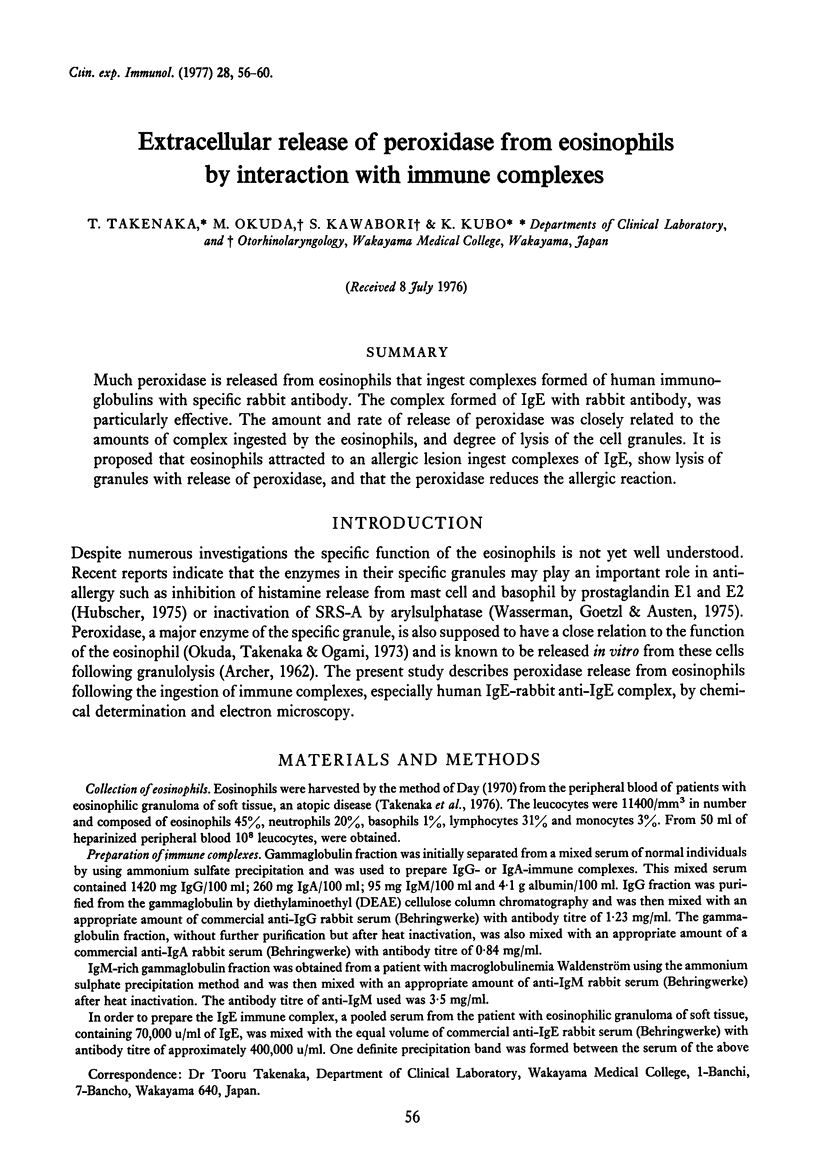
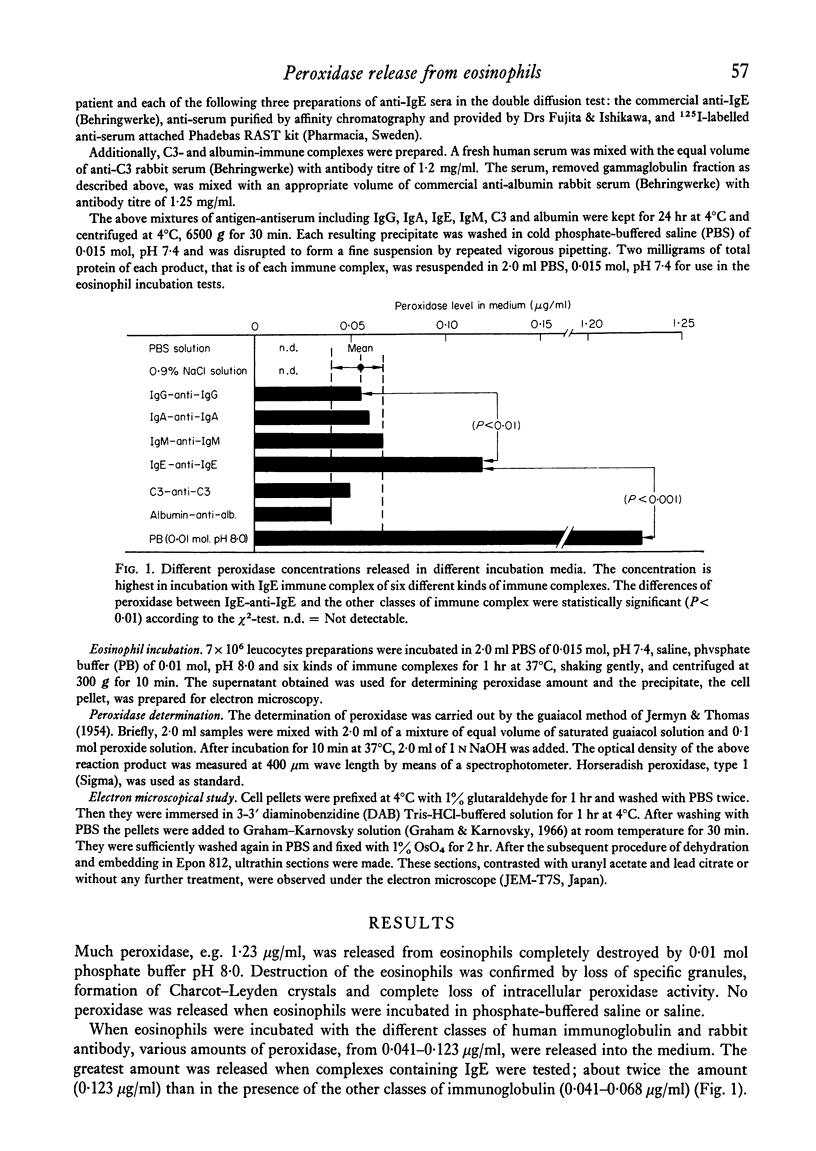
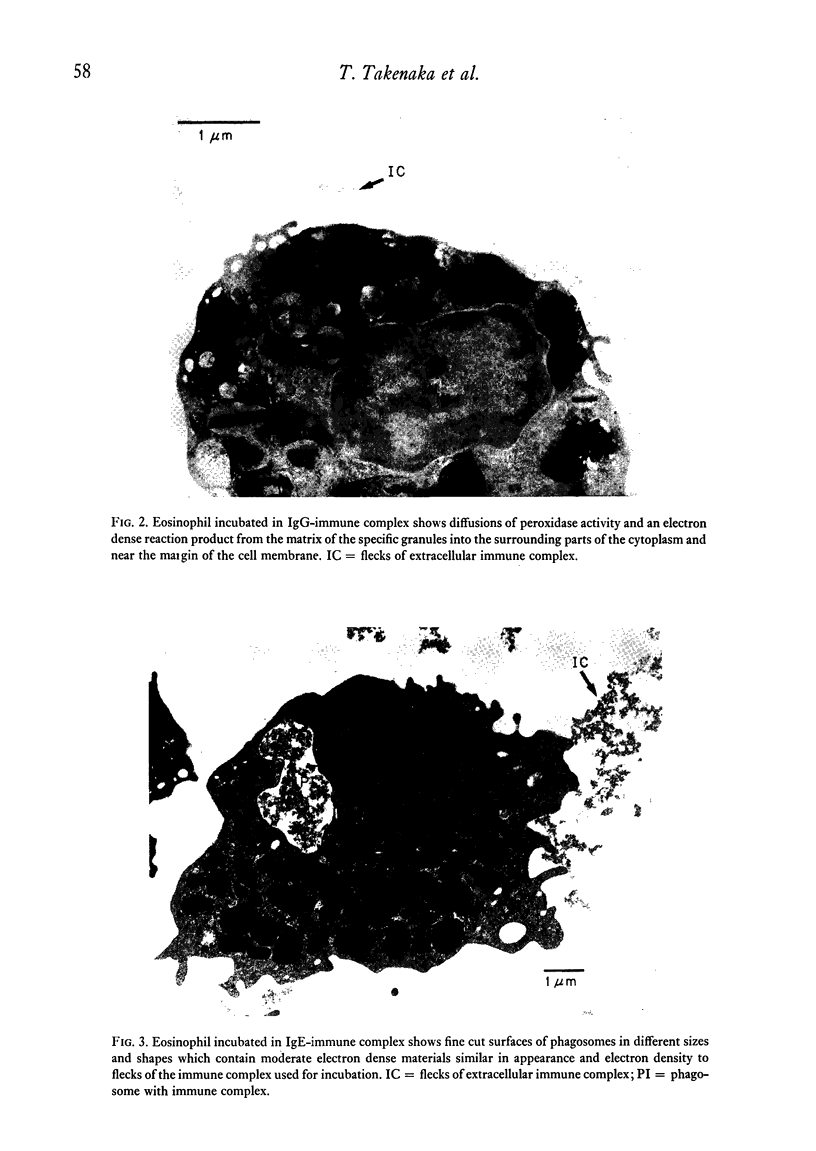
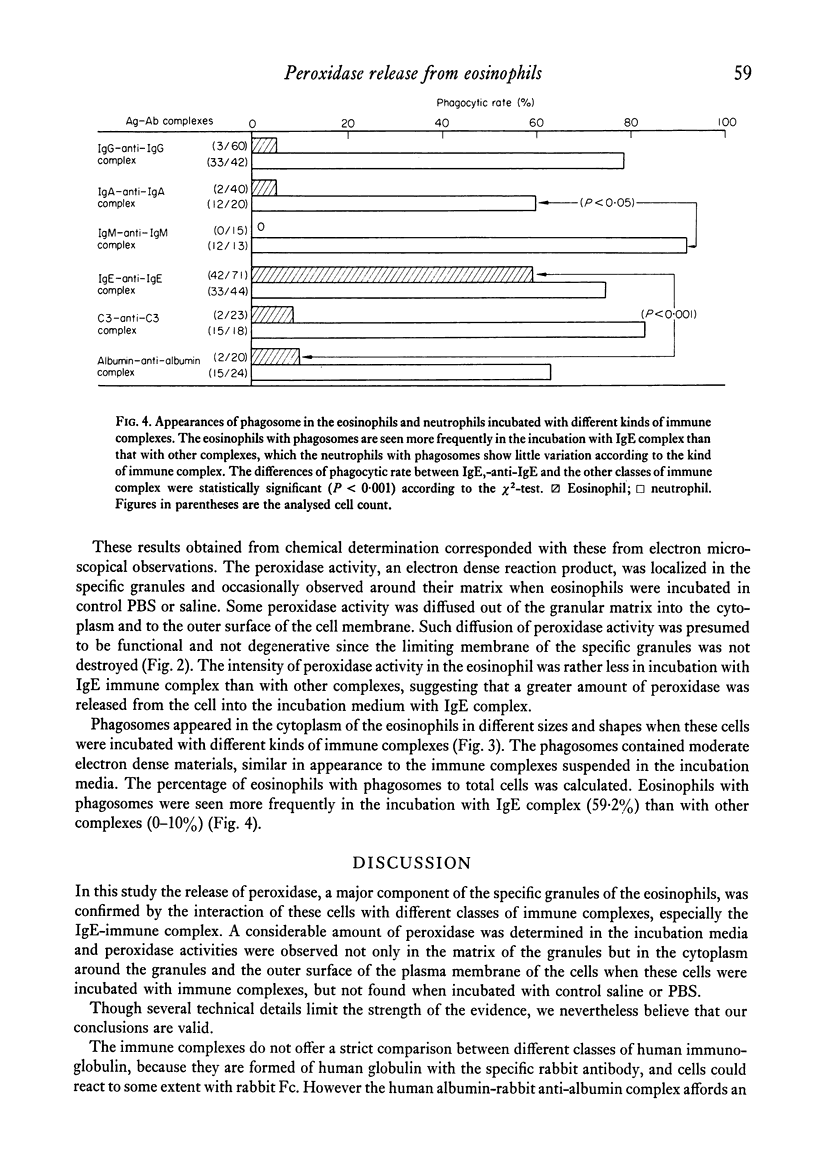
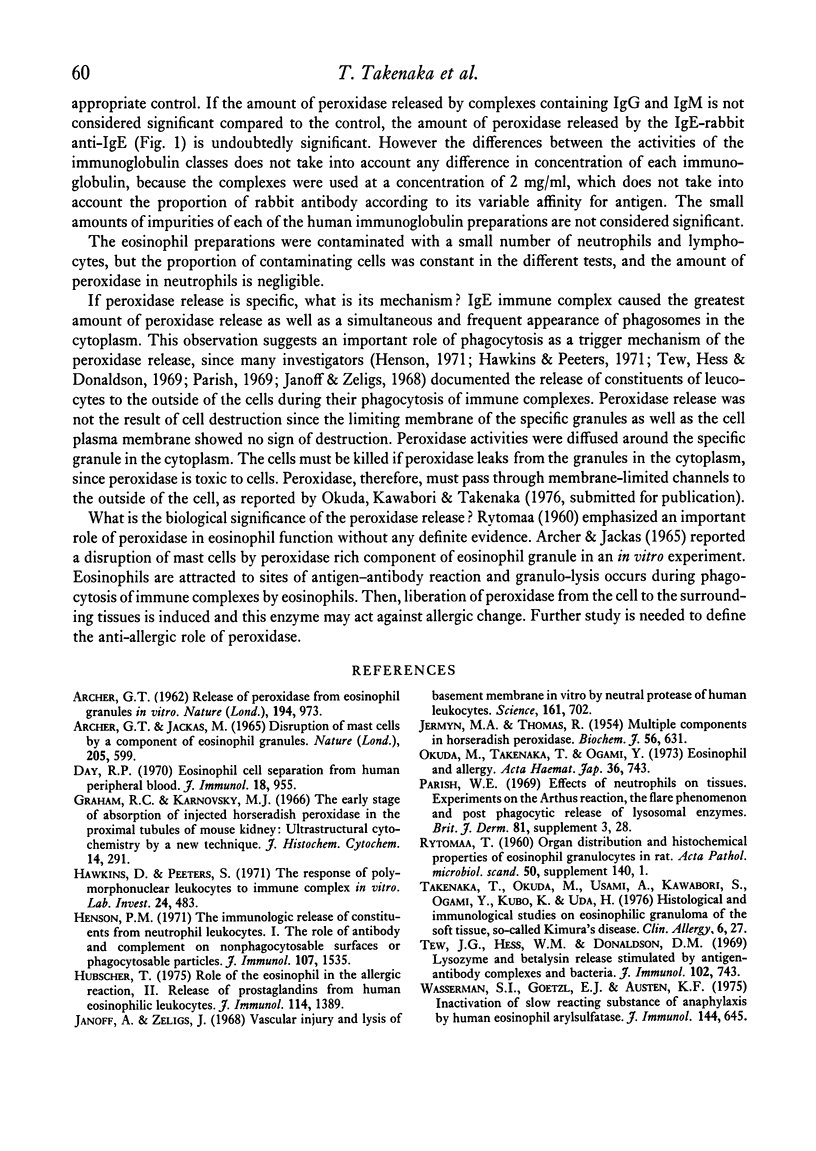
Images in this article
Selected References
These references are in PubMed. This may not be the complete list of references from this article.
- ARCHER G. T. Release of peroxidase from eosinophil granules in vitro. Nature. 1962 Jun 9;194:973–974. doi: 10.1038/194973b0. [DOI] [PubMed] [Google Scholar]
- Day R. P. Eosinophil cell separation from human peripheral blood. Immunology. 1970 Jun;18(6):955–959. [PMC free article] [PubMed] [Google Scholar]
- Graham R. C., Jr, Karnovsky M. J. The early stages of absorption of injected horseradish peroxidase in the proximal tubules of mouse kidney: ultrastructural cytochemistry by a new technique. J Histochem Cytochem. 1966 Apr;14(4):291–302. doi: 10.1177/14.4.291. [DOI] [PubMed] [Google Scholar]
- Hawkins D., Peeters S. The response of polymorphonuclear leukocytes to immune complexes in vitro. Lab Invest. 1971 Jun;24(6):483–491. [PubMed] [Google Scholar]
- Henson P. M. The immunologic release of constituents from neutrophil leukocytes. I. The role of antibody and complement on nonphagocytosable surfaces or phagocytosable particles. J Immunol. 1971 Dec;107(6):1535–1546. [PubMed] [Google Scholar]
- Hubscher T. Role of the eosinophil in the allergic reactions. II. Release of prostaglandins from human eosinophilic leukocytes. J Immunol. 1975 Apr;114(4):1389–1393. [PubMed] [Google Scholar]
- JERMYN M. A., THOMAS R. Multiple components in horse-radish peroxidase. Biochem J. 1954 Apr;56(4):631–639. doi: 10.1042/bj0560631. [DOI] [PMC free article] [PubMed] [Google Scholar]
- Janoff A., Zeligs J. D. Vascular injury and lysis of basement membrane in vitro by neutral protease of human leukocytes. Science. 1968 Aug 16;161(3842):702–704. doi: 10.1126/science.161.3842.702. [DOI] [PubMed] [Google Scholar]
- Okuda M., Takenaka T., Ogami Y. Eosinophil and allergy. Nihon Ketsueki Gakkai Zasshi. 1973 Oct;36(5):743–753. [PubMed] [Google Scholar]
- Takenaka T., Okuda M., Usami A., Kawabori S., Ogami Y. Histological and immunological studies on eosinophilic granuloma of soft tissue, so-called Kimura's disease. Clin Allergy. 1976 Jan;6(1):27–39. doi: 10.1111/j.1365-2222.1976.tb01409.x. [DOI] [PubMed] [Google Scholar]
- Tew J. G., Hess W. M., Donaldson D. M. Lysozyme and beta-lysin release stimulated by antigen-antibody complexes and bacteria. J Immunol. 1969 Mar;102(3):743–750. [PubMed] [Google Scholar]
- Wasserman S. I., Goetzl E. J., Austen K. F. Inactivation of slow reacting substance of anaphylaxis by human eosinophil arylsulfatase. J Immunol. 1975 Feb;114(2 Pt 1):645–649. [PubMed] [Google Scholar]




